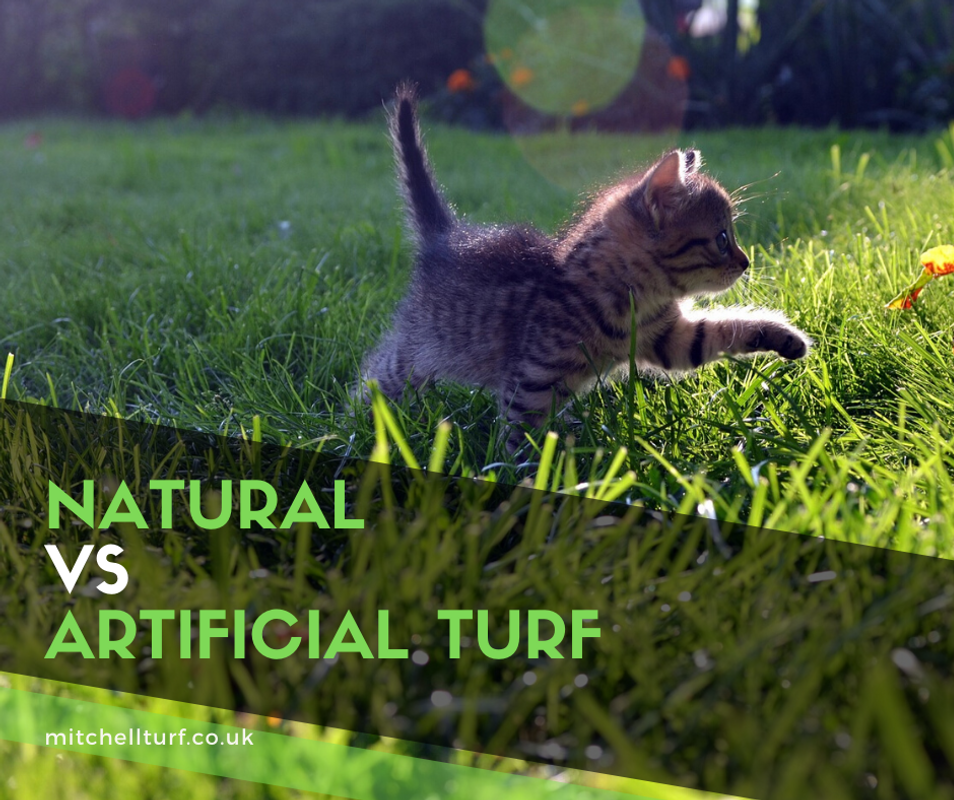Natural turf vs artificial turf – which is better?
We’ll tell you now – natural turf is still much, much better. Here’s why:
Since its invention in the 60s, artificial turf has come a long way and no one can deny that modern synthetic turf now looks realistic. This combined with what looks like a gloriously green garden and supposed low maintenance makes it seem like a great alternative to having a real grass lawn. However, although artificial turf can look like a real grass lawn, there are many differences between them, discussed in details below.
The price difference between real and artificial turf
Artificial turf is very costly upfront. On retailers websites, the cheapest kind of artificial turf comes in at about £25 per square metre whereas a natural lawn can cost £3 per square metre. This cost for artificial turf doesn't include the kit needed for joining the rolls together and then pinning them down. You also have the prep needed in your garden before you can lay the turf. So even though the turf itself isn’t cheap, there's also some hidden costs you might not originally have realised. Also, any bits of the turf that get discarded go to the landfill and lay there for years, unlike natural turf that will decompose, so it’s not environmentally friendly.
The maintenance costs of artificial turf
The extra costs to your wallet and the environment might seem worth it for the lack of watering and feeding that’s needed by foregoing a natural lawn. However, for artificial turf, these extra maintenance tasks are simply replaced with other, more time-consuming ones:
There are monthly maintenance tasks involved with having an artificial lawn. To stop the pile lying flat they need to be brushed, the mess pets make needs to be scrubbed off, when leaves inevitably fall every autumn they need to be removed to prevent moss growing and weeds can still be a problem for artificial lawns.
Also, once or twice a year your lawn needs to be serviced, which involves a mechanical brush, detergent and sand or infill being spread across the fake grass. You're simply replacing mowing with vacuuming.
Durability levels of artificial turf compared to real turf
While artificial turf can withstand bad weather for some years, unlike natural turf it can’t repair itself. When natural turf is worn and used it can recover on its own and if worst comes to worst can be patched up. However, damaged artificial turf isn’t so easily repaired and can end in it needing to be completely replaced, which is of course a costly and time consuming exercise to undertake.
Sustainability
Above everything else, artificial turf can never match the environmental benefits of a natural one. Grass takes in carbon dioxide from the air and part of the process of photosynthesis produces oxygen that we breathe. An area of just 15m2 of a healthy lawn produces enough oxygen per day to meet the oxygen needs of two adults. Each year lawns remove 5 percent of carbon dioxide from the earths atmosphere, reducing global warming.
Which is better - real or artificial turf?
Hands down, real turf wins this battle 100% of the time.
Regardless of how you look at it, artificial turf is a poor substitute for a real natural lawn. We're surrounded by an abundance of plastic, lets keep our lawns natural and thriving. Nature doesn't need to be smothered by more slowly degrading plastic.
Ready to purchase premium lawn turf?



